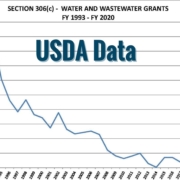APPROXIMATELY HALF OF RURAL HOUSEHOLDS HAVE RESPONDED TO THE CENSUS
April 1st every 10 years is traditionally “Census Day” when, in decades past, most Americans received their Census forms in the mail. Census 2020 is different for several reasons. Even before the COVID-19 health crisis, the 2020 Census process was going to be different. For the 2020 count, Americans did not receive a traditional paper census form. Rather, most households were mailed an “invitation” with a code to respond to the census questionnaire on the internet. (Households are also given the option to respond via telephone or request a traditional mail back form). Most U.S. households – approximately 95 percent – received Census invitations from mid-March through early April.
At the Half-Way Mark
As of May 17, 59.6 percent of all U.S. households had self-responded to the Census. Using response data from the Census Bureau and incorporating a tract-level analysis, the Housing Assistance Council estimated current response rates for rural, suburban, and urban communities. Suburban communities have the highest Census response rate at 66 percent, while the rural and small-town response rate is currently at 53 percent.

Expectedly, Rural Communities Lag in Online Response
As noted previously, Census 2020 will rely heavily on the internet and online responses. Nationally, 48.8 percent of Census questionnaires have been submitted via the internet. This year’s Census response was always a concern for rural communities given long-established internet deficiencies, household dynamics and poor connectivity in many rural markets. Correspondingly, only 35 percent of rural households have responded to the Census online. In contrast, over 56 percent of suburban households have responded via the internet – and 48 percent of urban households completed their forms electronically.

COVID-19 is Still Hindering Census Response – Especially in Rural Communities
Lower response rates in rural America are likely due to a combination of factors, but many rural households have not received their census invitations and have had no opportunity to participate.
Approximately 5 percent of US households – most of which are rural – were scheduled to have their census forms hand delivered March 15 – April 17. However, the Census Bureau suspended all field operations due to the COVID-19 pandemic. According to the Census Bureau’s latest guidance, field operations will now take place June 13-July 9, and the Census has resumed field operations in some limited markets. But the Census Bureau, and the Housing Assistance Council encourages households to respond online now—even without an invitation by providing their address.
Rural America is half-way through the Census process. Let’s finish strong. The importance of participating in Census 2020 for rural communities cannot be overstated.
View Story Map

 Housing Assistance Council
Housing Assistance Council
